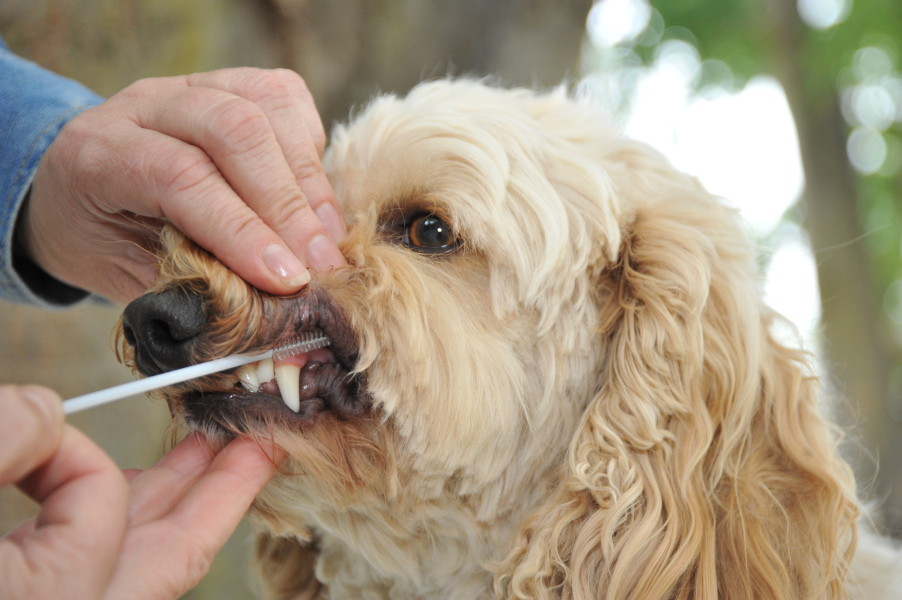Quick Summary
Click here for Price and Turnaround Time
Phenotype: Puppies appear clinically normal at birth but muscle atrophy is often apparent by 7 weeks of age. Affected puppies often appear noticeably smaller than littermates and may have problems with coordination and mobility. Within weeks, the puppies may have difficulty in holding their head up and may an exhibit an inability to stand or may collapse after exertion. The disease is severe and progressive with most affected dogs being euthanized before 6 months of age.
Mode of Inheritance: X-linked recessive
Alleles: N = Normal, MTMR = X-linked myotubular myopathy
Breeds appropriate for testing: Rottweiler
Explanation of Results:
Males only have one X chromosome whereas females have two, therefore possible genotypes will differ by sex.
- Female dogs with N/N genoytpe and male dogs with N genotype will not have X-linked myotubular myopathy, and cannot transmit this variant to their offspring.
- Female dogs with MTMR/N genotype will not have X-linked myotubular myopathy, but are carriers. If a carrier female is bred to a normal (N) male, all female puppies will be normal but 50% of them will be carriers. Among male puppies from this type of cross, 50% will be normal and 50% will be affected by X-linked myotubular myopathy.
- Female dogs with MTMR/MTMR genotype and male dogs with MTMR genotype will have X-linked myotubular myopathy, a severe, progressive muscle disease.
Results of this test can be submitted to the OFA (Orthopedic Foundation for Animals)
Rottweiler Health Panel
$130 per animal
Sample Collection
Dog DNA tests are carried out using cells brushed from your dog's cheeks and gums. The preferred cytology brushes are sent to you by mail, or you may provide your own brushes. For accepted alternative brushes, click here
We recommend waiting until puppies are at least three weeks old before testing.

Step-By-Step:
- Make sure the dog has not had anything to eat or drink for at least 1 hour prior to collecting sample.
- When swabbing puppies, isolate each puppy from the mother, littermates and any shared toys for 1 hour prior to swabbing. Puppies should not have nursed or eaten for 1 hour prior to collecting sample.
- If collecting samples from more than one dog, make sure to sample one dog at a time and wash your hands before swabbing another dog.
- Label brush sleeve with name or ID of dog to be sampled.
- Open brush sleeve by arrow and remove one brush by its handle.
- Place bristle head between the dog’s gums and cheek and press lightly on the outside of the cheek while rubbing or rotating the brush back and forth for 15 seconds.
- Wave the brush in the air for 20 seconds to air dry.
- Insert brush back into sleeve.
- Repeat steps 5 - 8 for each unused brush in sleeve on a fresh area of cheek and gums. Make sure to use and return all brushes sent by the VGL. In most cases, it will be 3 brushes per dog. If using interdental gum brushes, please note that the VGL requires 4 brushes per dog and only moderate or wide interdental gum brushes are accepted.
- Do not seal brushes in sleeve.
- Place all samples in an envelope and return to the address provided.
ATTENTION:
- Do not collect saliva/drool – the key to obtaining a good sample is getting cheek cells on the swab
- Do not rub swab on the dog’s tongue or teeth – this will result in poor quality sample
- Do not collect a sample from a puppy that has recently nursed – the mother’s genetic material can rub off on the puppy’s mouth and contaminate the sample
X-linked myotubular myopathy (XLMTM) is an inherited muscle disease that affects Rottweilers. The disease is caused by a defect in the myotubularin protein, a component of muscle cell membranes, which ultimately inhibits their ability to contract. Puppies appear clinically normal at birth but muscle atrophy is often apparent by 7 weeks of age. Affected puppies often appear noticeably smaller than littermates and may have problems with coordination and mobility. Within weeks, affected puppies may have difficulty in holding their head up and may an exhibit an inability to stand or may collapse after exertion. The disease is severe and progressive with most affected dogs being euthanized before 6 months of age.
The Rottweiler XLMTM causal missense mutation (c.1151A>C), reported here as MTMR, occurs in exon 11 of the myotubular myopathy 1 (MTM1) gene. The disease is inherited in an X-linked recessive fashion. Females with two defective copies will show disease. Clinical signs are absent in females with one normal and one affected gene (carriers). Males have only one X chromosome, and therefore males that inherit the affected allele will show disease. If the inherited allele is normal, males do not have the disease.
Testing for for XLMTM in Rottweilers assists clinicians with diagnosis of myotubular myopathy and helps breeders identify carrier females to avoid mating pairs that can produce affected dogs. When a carrier female is bred to a normal male, all female puppies will be normal but 50% of them will be carriers. Among male puppies from this type of cross, 50% will be normal and 50% will be affected.
